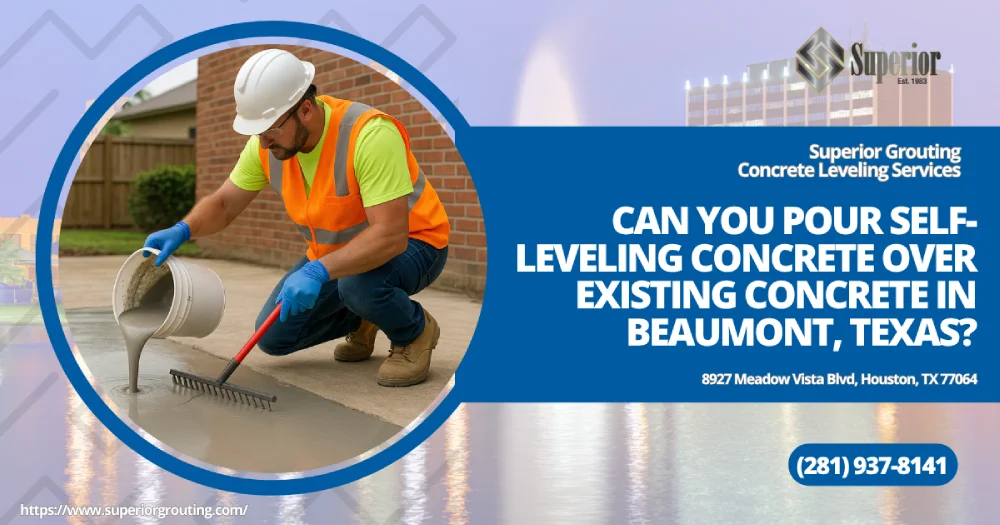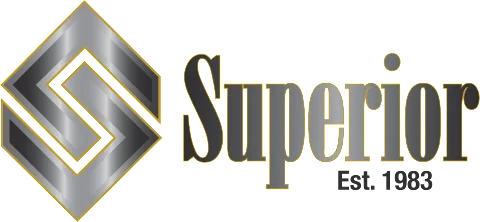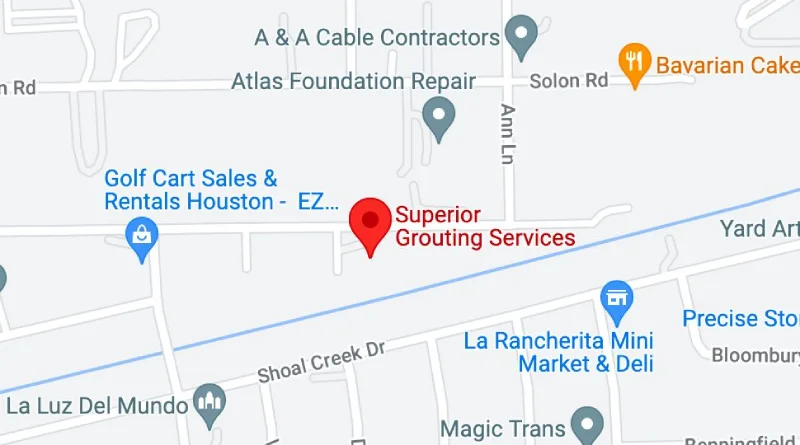Can You Pour Self-Leveling Concrete Over Existing Concrete in Beaumont, Texas?

A perfectly smooth concrete floor keeps forklifts stable, eliminates trip hazards, and protects high-value equipment. If your Beaumont, TX facility has dips, ruts, or height variations, you’re probably asking whether a self-leveling overlay can restore the slab without a full tear-out. The short answer is yes—self-leveling concrete can be poured over existing concrete in Beaumont, Texas—but only after a disciplined inspection, proper surface profiling, and strict moisture control. Below you’ll find an in-depth guide engineered for plant managers, maintenance supervisors, and construction professionals who demand durable, low-downtime results.
Why Beaumont, TX Facilities Choose Self-Leveling Concrete
Beaumont’s industrial corridor is packed with refineries, chemical plants, warehouses, and loading docks that run around the clock. Stopping production to replace a slab can mean huge revenue losses. Self-leveling concrete gives you:
• Rapid return to service—foot traffic in four hours, heavy industrial traffic within 24–48 hours
• High compressive strength—6,000-psi mixes shrug off axle loads and constant forklift traffic
• Near-laser flatness—ideal for AGVs, narrow-aisle racking, or precision machine bases
• Compatibility with epoxy, polyurethane, or decorative concrete finishes
Add those benefits to reduced demolition noise and minimal dust generation, and it’s easy to see why concrete leveling services are surging across Beaumont, TX.
First Step: Full-Scale Slab Inspection
Before ordering material, Superior Grouting schedules a comprehensive site inspection. We look for:
• Structural damage—delamination, punch-throughs, or substrate movement that might require foundation repair
• Moisture vapor—ASTM F2170 probes target ≤75 % RH to avoid blistering under a self-leveling overlay
• Void detection—ground-penetrating radar or chain-drag testing pinpoints areas that might need closed-cell grout injection
• Compressive strength—core samples must read at least 3,500 psi; heavy industrial floors often need ≥4,500 psi
If the slab fails any of these metrics, alternative methods—poly concrete raising, high-density polyurethane injection, or corsair concrete lifting—may be specified to bring the concrete back to its original elevation before overlay.
Surface Preparation: The Make-or-Break Phase
Concrete leveling success is 80 % preparation and 20 % placement. In Beaumont’s humid Gulf Coast climate, SuperiorGrouting concrete leveling services 8927 Meadow Vista rely on the following system:
- Mechanical profiling to ICRI CSP 3–5 using shot blasting or planetary grinding. Acid etching is avoided; refinery-grade oils neutralize acids and leave residue.
- Deep degreasing followed by 5,000-psi hot-water pressure wash. A water-drop test confirms open pores.
- Crack routing and epoxy injection—stops reflective cracking through the new cementitious layer.
- Priming with moisture-tolerant epoxy or polymer dispersion. Some mixes demand a sand-broadcast for slip resistance and stronger mechanical keying.
Skipping any of these steps creates bond failures that show up exactly when axle loads are heaviest—usually the first busy season after the project.
Material Selection: Polymer, Cementitious, or High-Density Systems?
Industrial facilities in Beaumont, Texas have at least three overlay categories to consider:
• Polymer-modified self-leveling concrete—cement and polymer blend, ¼- to 1-inch depth, 6,000-psi compressive strength, ready for forklift traffic next day
• High-flow cementitious toppings—economical choice for large interior slabs, but cure time is slightly longer
• Hybrid epoxy-cement overlays—ideal where chemical resistance outweighs cost; often used under secondary containment at refineries
If voids are present or the substrate is highly dynamic, closed-cell foam or high-density polyurethane can pre-stabilize the base before the self-leveling pour. This combination virtually eliminates future settlement.
Step-by-Step Placement in Live Industrial Settings
- Staging and batching
• All pallets, water meters, and mixers are positioned outside forklift corridors.
• Water temperature is kept below 70 °F; ice is added in summer to manage Beaumont’s 95 °F ambient heat. - Pumping or barrel mixing
• Pumps feed material up to 300 ft at 30 bags/minute—ideal for expansive warehouse corridors.
• Barrel mixing is reserved for tight mechanical rooms or elevated interior slabs. - Gauge-rake and smoothing
• Crews set laser levels to the required elevation, then pull gauge rakes to specified thickness, often ⅜ inch.
• Spiked rollers release entrapped air within 10 minutes of placement. - Joint honoring
• Existing control and expansion joints are saw-cut through the fresh overlay within 24 hours, then filled with elastomeric polyurea to prevent trip hazards. - Curing protocol
• A light water mist or curing compound maintains 50–80 °F surface temperature.
• Relative humidity is monitored to stay below 60 % during cure time, reducing freeze-thaw scaling risk in winter.
Coating, Coloring, and Finishing Options
After the self-leveling slab reaches design strength, you can:
• Grind to a polished concrete finish with integral color for aesthetic corridors without additional coatings.
• Install a high-build epoxy system if forklift traffic and chemical spills are daily realities.
• Add slip-resistant aggregates for wet-process zones or exterior patio staging areas.
Because Beaumont’s petrochemical facilities handle acids, bases, and solvents, epoxy and novolac topcoats are the most popular choices. They maintain gloss, resist staining, and reduce downtime for maintenance.
Cost, Timeline, and Impact on Production
Typical self-leveling concrete leveling services in Beaumont, TX range from $2.50 to $4.75 per square foot at ¼-inch thickness. Moisture-mitigation primer, integral color, or epoxy topcoat can add $1.00–$2.00. A 20,000-square-foot refinery warehouse poured on a Friday night can be back under forklift traffic by Monday morning, cutting downtime by more than 70 % compared with full slab replacement.
When Self-Leveling Isn’t the Answer
• Severe substrate movement—If foundation repair is needed or differential settlement exceeds L/360, remove and replace or stabilize with deep grout columns.
• Persistent high moisture—If in-slab RH never drops below 85 %, vapor-permeable overlays or drained screeds may trump sealed self-levelers.
• Extreme chemical exposure—Polyurethane-concrete toppings handle hot caustics better than Portland-cement systems.
In each case, Superior Grouting’s concrete repair specialists weigh site conditions, industrial traffic patterns, and budget to specify the safest, longest-lasting fix.


